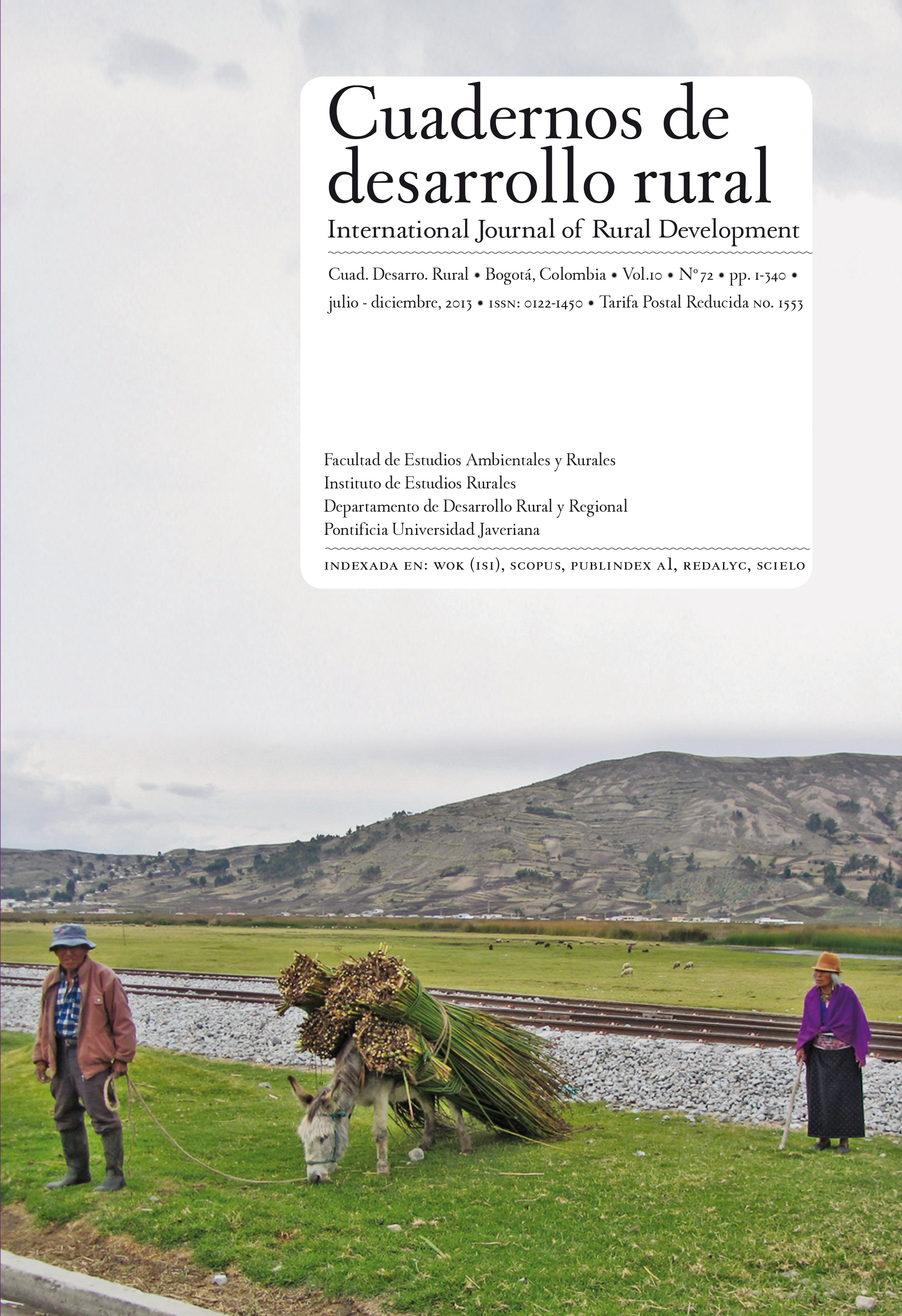Abstract
Este artículo explora las experiencias de mujeres rurales que pertenecen a un grupo de artesanas en la regiónde Puno (Perú). Basados en una investigación de campo cualitativa, se analizan tanto el impacto económicocomo los efectos sociales del trabajo en grupo. El artículo discute cambios en la producción artesanal yexamina la artesanía como fuente de ingresos para las mujeres. También presenta el grupo como espaciosocial y explora el liderazgo a ese nivel. Pese a sus beneficios para el desarrollo individual de las mujeres,el trabajo en grupo puede estar en conflicto con sus responsabilidades domésticas. Este estudio enfatiza laimportancia de analizar la artesanía como estrategia de desarrollo rural desde una perspectiva de género.Cuadernos de Desarrollo Ruralis registered under a Creative Commons Attribution 4.0 International Public License. Thus, this work may be reproduced, distributed, and publicly shared in digital format, as long as the names of the authors and Pontificia Universidad Javeriana are acknowledged. Others are allowed to quote, adapt, transform, auto-archive, republish, and create based on this material, for any purpose (even commercial ones), provided the authorship is duly acknowledged, a link to the original work is provided, and it is specified if changes have been made. Pontificia Universidad Javeriana does not hold the rights of published works and the authors are solely responsible for the contents of their works; they keep the moral, intellectual, privacy, and publicity rights.
Approving the intervention of the work (review, copy-editing, translation, layout) and the following outreach, are granted through an use license and not through an assignment of rights. This means the journal and Pontificia Universidad Javeriana cannot be held responsible for any ethical malpractice by the authors. As a consequence of the protection granted by the use license, the journal is not required to publish recantations or modify information already published, unless the errata stems from the editorial management process. Publishing contents in this journal does not generate royalties for contributors.


